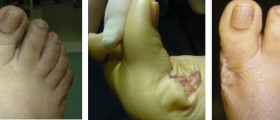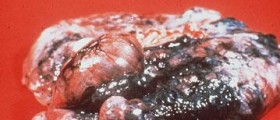
Fluid in the lungs — medically known as pulmonary edema — is a serious and potentially life-threatening medical condition that requires urgent care.
Pulmonary Edema is a Very Serious Condition
This condition may occur after a wide range of surgical procedures and features an accumulation of fluid in the lungs which significantly affects the normal process of respiration (breathing). It amounts to a serious medical emergency.
A small amount of fluid in a person's lungs after a surgery does not cause huge disturbances and it is much easier to deal with. On the other hand, a large amount of fluid in the lungs leads to severe shortness of breath and must be treated urgently and aggressively.
Fluid in the lungs is a potential complication of many surgeries. This is actually one of the most serious postoperative complications after certain surgical procedures. It is estimated that respiratory complications account for approximately 15% of all postoperative complications in surgeries performed under general anesthesia.
Fluid in the lungs is, for example, common after heart surgeries. In patients who have undergone a heart valve replacement surgery, pulmonary edema is one of the possible complications. In this case, it affects many patients and is, basically, an expected condition that doctors will routinely watch out for. This is why fluid in the lungs is considered more of reaction to a surgery than a complication during one.
Patients who undergo a valve replacement surgery are easily treated once the pulmonary edema occurs. It is believed that this complication occurs as a consequence of topical heart cooling which is performed with ice.
Lung fluid accumulation is also possible after a bypass surgery and in this case it usually occurs a few weeks after the surgery. It must be treated promptly, and for that to be possible, patients must seek care as soon as they notice symptoms. Fluid in the patient's lungs after surgery carries a significant risk of contracting pneumonia, one more serious complication.
There are certain measures of prevention routinely applied after an open heart surgery, in order to reduce the risk of occurrence of fluid in lungs. They are equally effective and also applied in case of any other major surgical procedure.
It is essential to keep the lungs active and exercise them during postoperative period. This can be successfully done by breathing the air in deeply and holding your breath for some time. This maneuver keeps the airway clear and maintains the tidal volume. By taking this active approach after a surgery, it helps to prevent pulmonary edema.
Patients are advised to move as much as possible and become more active in general. The activity includes muscle contraction and this is another preventive measure against pulmonary edema.
Finally, patients are given antibiotics in order to prevent bacterial kinds of pneumonia which may trigger pulmonary edema.
Treatment starts promptly once the patients get hospitalized. Once the patient gets discharged, any relapse of the condition requires him or her to be admitted to hospital again.
Dry Drowning is Different, but also Dangerous
Dry drowning basically means that water has entered the lungs of an individual. This often leads to suffocation because there is not enough oxygen in the lungs.
The time when death may occur differs. It can be instantly after the water has entered the lungs or it can occur after 24 hours.
It is important that the damage caused by dry drowning is treated properly or the symptoms may appear again in the next couple of days.
The water ends up in the lungs usually during a bath either in swimming pool or a bath tub. This is why parents must be careful when giving their baby a bath. Toddlers have not yet developed their lungs to the fullest so they are the ones that suffer most from dry drowning in most cases. If the toddler has some lung disease or has problems with breathing like asthma, this will only make matters worse.
When people breathe in or inhale, the air goes through their larynx (more commonly called the voice box) before it ends up in the person's lungs. However, when a person inhales water instead of air, a contraction of muscles within the laryngeal cord occurs and then the larynx shuts. This spasm condition goes on for half a minute. During this half a minute the exhalation process goes on normally while the inhalation process is partially blocked. When this happens, the diaphragm creates vacuum and there is no air supply to it.
Since the vacuum sticks, a person will normally try to inhale harder in order to bring air to those vacuums. At the same time the vacuum puts on more pressure on the chest. Now there is no oxygen inflow since it is obstructed and this condition is called hypoxia. Another thing that is blocked as well is the outflow of dioxide. Death occurs since the patient's supply of oxygen is lacking.
To sum up, both fluid in the lungs and dry drowning are situations which can lead to suffocation and, if not treated, death. Fluid in the lungs usually appears after certain surgical procedures while dry drowning takes place after breathing in water (often after swimming), allowing it to get into the lungs, and subsequently triggering muscular contractions in the larynx which prevents proper perspiration.
If you or your child face any of these types of lung or breathing problems, you have to seek medical assistance as soon as possible, as both are extremely serious. The symptoms may not be visible instantly. However, if you have undergone some of the situations mentioned above, rule out any dangerous health conditions through an emergency visit to your doctor, or alternatively call an ambulance or go to the emergency room.
- medlineplus.gov/ency/article/002956.htm
- medlineplus.gov/ency/article/000065.htm
- Photo courtesy of Official U.S. Navy Page by Flickr: www.flickr.com/photos/usnavy/5764936918/

















Your thoughts on this
Loading...